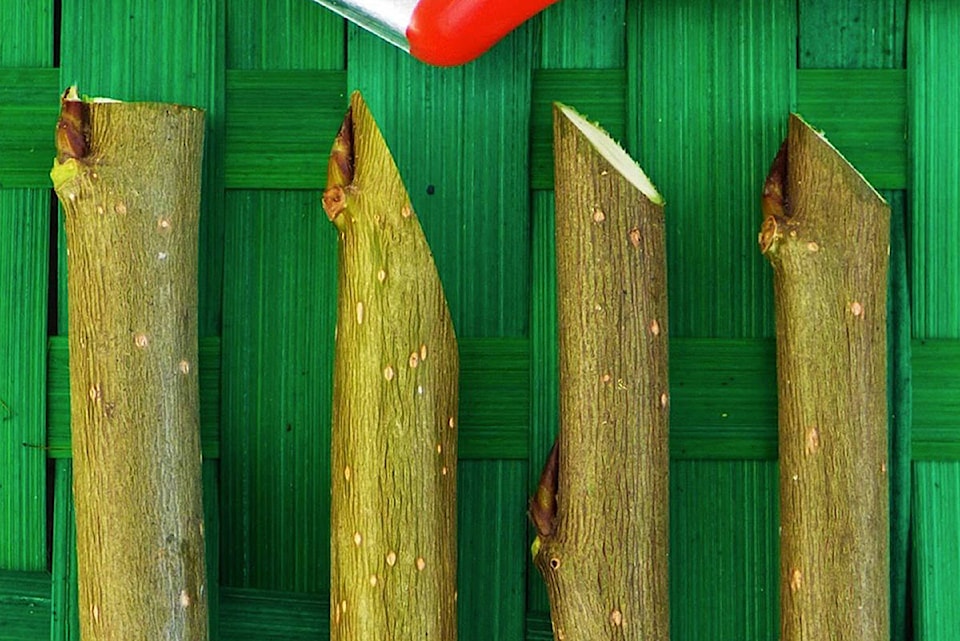I’ll be the first to admit that it is the male of the species who must take responsibility for most of the hack jobs out there.
I don’t think they do it out of malice; it’s just a masculine perception that the more you cut, the better the outcome – which might be the case if one were acquiring firewood.
However, in light of those poor stumped trees or shrubs that stand as a testament to our misguided enthusiasm, I think it might be best to offer my fellow man (and women) a simple guide to better pruning outcomes.
Appropriate tools – this will be the most disappointing part of this article for men, in general, but a chainsaw is rarely an appropriate pruning tool except for complete removal or cuts over 6” in diameter.
A curved pruning saw is a much better choice as it leaves a smoother cut, along with a pair of loppers and hand pruners (or secateurs).
All tools should be cleaned (with Lysol, rubbing alcohol or a 10 per cent bleach solution) prior to use and be sharp, as a dull tool crushes wood and damages with every cut.
Best time to prune – while it would be convenient for there to be a ‘one-time-prune-all’ season, the truth of the matter is that the late winter or dormant period is just an interval for structural pruning of deciduous plants, which means most of your trees and shrubs that lose their leaves.
Essentially you want to remove any diseased, damaged or old wood, as well as any wayward or crossing branches.
If possible, try to pick a day when the temperature is above freezing which will make the cuts much easier to perform and minimize the likelihood of leaving damaged wounds, which can facilitate future fungal infections.
The exceptions – hydrangeas are the best example here as some species such as Mophead (Hydrangea macrophylla) carry their flower buds over winter, so by contour pruning your bushes you effectively remove all the blooms for that spring.
Others are much more forgiving, including PeeGee types (H. paniculata) and smooth hydrangea (H. arborescens), which bloom on new wood and can be hard pruned in late winter.
Other common shrubs that carry their flower buds through to spring include lilac, deciduous azaleas, forsythia and camellias – these are best pruned right after their bloom period.
Watch those buds – every pruning cut counts and you should never be planning these just to make your shrub conform to particular shape.
You need to be looking for the leaf buds and making your cut just above these, angled away from the tip of the bud.
The image above shows a proper cut on the right hand side, while the others are (from right to left) too far away (resulting in a dead stub), angled below the bud (which will dry and kill it) and too flat and close, damaging the bud tip.
The other thing to remember here is that your growth is going to be diverted in the direction that the bud is pointing, so make sure that is away from the centre of the bush.
Know what you’re pruning – it is particularly important when pruning fruit trees to learn where the flower buds (which will produce the fruit) are produced, which in the case of apples and pears are prominent stubby spurs and some tip buds. For cherries and plums the spurs are much smaller and often carried along the length of the branch and as these don’t stay productive indefinitely – some rejuvenation pruning is required on mature specimens.
Mike Lascelle is a local
nursery manager and
gardening author
(hebe_acer@hotmail.com).
